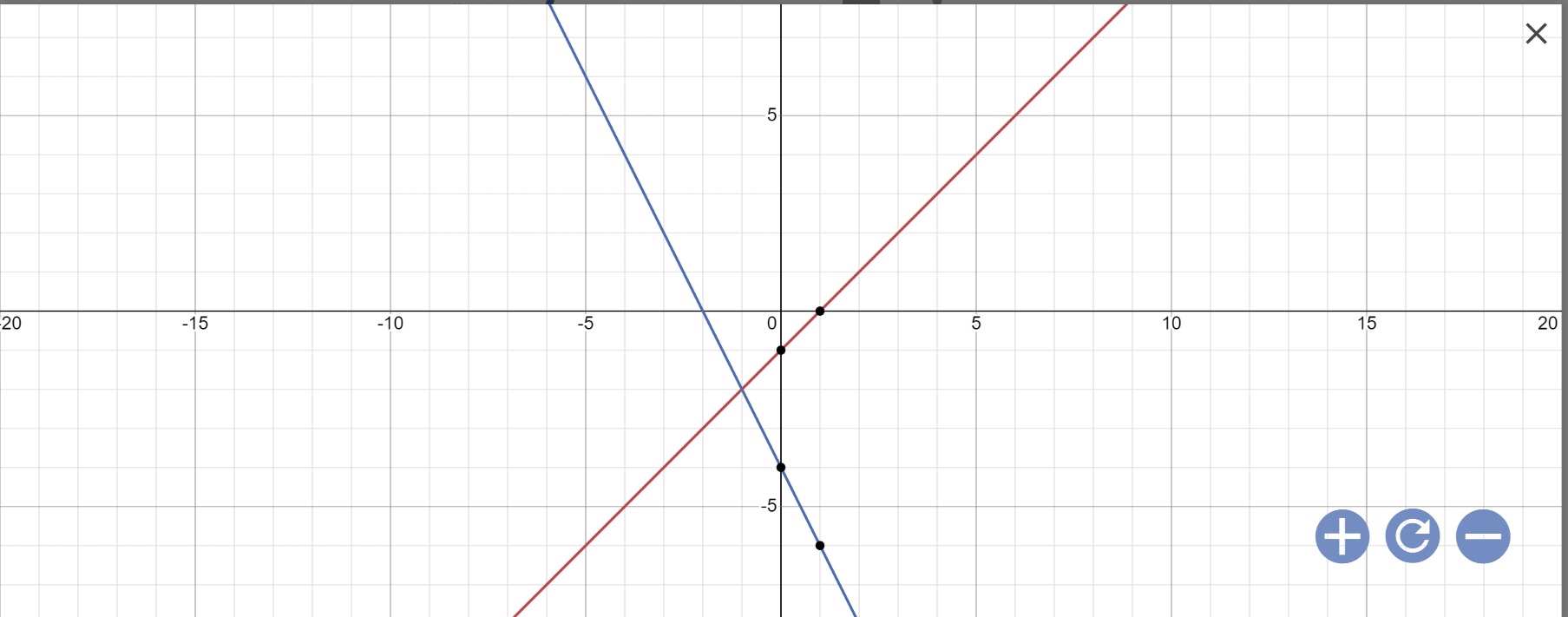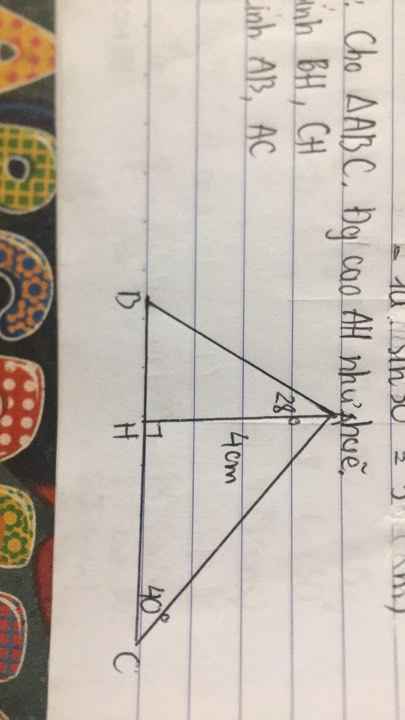Cho \(a,b,c>0\), tìm giá trị nhỏ nhất của biểu thức:
A\(=\dfrac{a}{\sqrt{ab+b^2}}+\dfrac{b}{\sqrt{bc+c^2}}+\dfrac{c}{\sqrt{ca+a^2}}\)
Hãy nhập câu hỏi của bạn vào đây, nếu là tài khoản VIP, bạn sẽ được ưu tiên trả lời.

Xét ΔAHB vuông tại H có \(tanBAH=\dfrac{BH}{AH}\)
=>\(BH=AH\cdot tanBAH=4\cdot tan28\simeq2,13\left(cm\right)\)
Xét ΔAHC vuông tại H có
\(tanC=\dfrac{AH}{HC}\)
=>\(HC=\dfrac{AH}{tanC}=\dfrac{4}{tan40}\simeq4,77\left(cm\right)\)
ΔAHB vuông tại H
=>\(AH^2+HB^2=AB^2\)
=>\(AB=\sqrt{AH^2+HB^2}\simeq4,53\left(cm\right)\)
ΔAHC vuông tại H
=>\(AH^2+HC^2+AC^2\)
=>\(AC=\sqrt{AH^2+HC^2}\simeq6,23\left(cm\right)\)

\(\sqrt{29+12\sqrt{5}}+\sqrt{29-12\sqrt{5}}\)
\(=\sqrt{20+2\cdot2\sqrt{5}\cdot3+9}+\sqrt{20-2\cdot2\sqrt{5}\cdot3+9}\)
\(=\sqrt{\left(2\sqrt{5}+3\right)^2}+\sqrt{\left(2\sqrt{5}-3\right)^2}\)
\(=2\sqrt{5}+3+2\sqrt{5}-3=4\sqrt{5}\)
`sqrt{29 + 12 sqrt{5}} + sqrt{29 - 12sqrt{5}}`
`= sqrt{20 + 2 . 2sqrt{5} . 3 + 9 } + sqrt{20 - 2 . 2sqrt{5} . 3 + 9}`
`= sqrt{(2sqrt{5})^2 + 2 . 2sqrt{5} . 3 + 3^2 } + sqrt{(2sqrt{5})^2 - 2 . 2sqrt{5} . 3 + 3^2}`
`= sqrt{(2sqrt{5} + 3)^2} + sqrt{(2sqrt{5} - 3)^2}`
`= |2sqrt{5} + 3| + |2sqrt{5} + 3|`
`= 2sqrt{5} + 3 + 2sqrt{5} - 3`
`= 4 sqrt{5}`

Bài 2:
Xét tam giác ABC vuông tại A ta có:
\(sinC=\dfrac{AB}{BC}=>\dfrac{AB}{BC}=\dfrac{3}{4}\\ =>AB=\dfrac{3}{4}BC=\dfrac{3}{4}\cdot10=\dfrac{15}{2}\left(cm\right)\)
Áp dụng định lý Pythagore cho tam giác ABC ta có:
\(AB^2+AC^2=BC^2\\ =>\left(\dfrac{15}{2}\right)^2+AC^2=10^2\\ =>AC=\sqrt{10^2-\left(\dfrac{15}{2}\right)^2}=\dfrac{5\sqrt{7}}{2}\left(cm\right)\)
Áp dụng hệ thức lượng ta có:
\(AB^2=BC\cdot BH=>BH=\dfrac{AB^2}{BC}=\left(\dfrac{15}{2}\right)^2:10=\dfrac{225}{40}\left(cm\right)\\ AC^2=BC\cdot CH=>CH=\dfrac{AC^2}{BC}=\left(\dfrac{5\sqrt{7}}{2}\right)^2:10=\dfrac{175}{40}\left(cm\right)\)
Bài 9:
ΔABC vuông tại A
=>\(BC^2=AB^2+AC^2\)
=>\(BC=\sqrt{9^2+12^2}=15\left(cm\right)\)
ΔABC vuông tại A
=>\(S_{ABC}=\dfrac{1}{2}\cdot AB\cdot AC=\dfrac{1}{2}\cdot9\cdot12=54\left(cm^2\right)\)
Xét ΔABC có AD là phân giác
nên \(\dfrac{BD}{CD}=\dfrac{AB}{AC}=\dfrac{9}{12}=\dfrac{3}{4}\)
=>\(\dfrac{BD}{BC}=\dfrac{3}{7}\)
=>\(S_{ABD}=54\cdot\dfrac{3}{7}=\dfrac{162}{7}\left(cm^2\right)\)

\frac{\sqrt{\left(6.2\right)^{2}-\left(5.9\right)^{2}}}{\sqrt{2.43}}

Xét tứ giác ADHE có \(\widehat{ADH}=\widehat{AEH}=\widehat{DAE}=90^0\)
nên ADHE là hình chữ nhật
=>AH=DE
Xét ΔABH vuông tại H có HD là đường cao
nên \(AD\cdot AB=AH^2\)
Xét ΔAHC vuông tại H có HE là đường cao
nên \(AE\cdot AC=AH^2\)
\(AD\cdot AB+AE\cdot AC=AH^2+AH^2\)
\(=2AH^2=2DE^2\)

ĐKXĐ: \(\left\{{}\begin{matrix}x>=0\\x\ne4\end{matrix}\right.\)
\(P=\left(\dfrac{2}{x-4}+\dfrac{1}{\sqrt{x}+2}\right):\dfrac{1}{\sqrt{x}+2}\)
\(=\dfrac{2+\sqrt{x}-2}{\left(\sqrt{x}-2\right)\left(\sqrt{x}+2\right)}\cdot\dfrac{\sqrt{x}+2}{1}=\dfrac{\sqrt{x}}{\sqrt{x}-2}\)
Để P=3/2 thì \(\dfrac{\sqrt{x}}{\sqrt{x}-2}=\dfrac{3}{2}\)
=>\(3\left(\sqrt{x}-2\right)=2\sqrt{x}\)
=>\(3\sqrt{x}-2\sqrt{x}=6\)
=>\(\sqrt{x}=6\)
=>x=36(nhận)

a: 
b: Phương trình hoành độ giao điểm là:
-2x-4=x-1
=>-2x-x=-1+4
=>-3x=3
=>x=-1
Thay x=-1 vào y=x-1, ta được:
y=-1-1=-2
Vậy: Tọa độ giao điểm là A(-1;-2)

\(A=2\sqrt{2}\left(\dfrac{a}{2\sqrt{2b\left(a+b\right)}}+\dfrac{b}{2\sqrt{2c\left(b+c\right)}}+\dfrac{a}{2\sqrt{2a\left(c+a\right)}}\right)\)
\(A\ge2\sqrt{2}\left(\dfrac{a}{2b+a+b}+\dfrac{b}{2c+b+c}+\dfrac{a}{2a+c+a}\right)\)
\(A\ge2\sqrt{2}\left(\dfrac{a^2}{a^2+3ab}+\dfrac{b^2}{b^2+3bc}+\dfrac{c^2}{c^2+3ca}\right)\)
\(A\ge\dfrac{2\sqrt{2}\left(a+b+c\right)^2}{a^2+b^2+c^2+3\left(ab+bc+ca\right)}=\dfrac{2\sqrt{2}\left(a+b+c\right)^2}{\left(a+b+c\right)^2+ab+bc+ca}\)
\(A\ge\dfrac{2\sqrt{2}\left(a+b+c\right)^2}{\left(a+b+c\right)^2+\dfrac{1}{3}\left(a+b+c\right)^2}=\dfrac{3\sqrt{2}}{2}\)
Dấu "=" xảy ra khi \(a=b=c\)
Bổ sung các bđt được áp dụng trong bài thầy Lâm cho rõ ràng:
Áp dụng Bđt Cauchy và Bunhiacopxki :
\(a+3b=2b+\left(a+b\right)\ge2\sqrt[]{2b\left(a+b\right)}\)
\(ab+bc+ca\le\sqrt[]{\left(a^2+b^2+c^2\right)\left(a^2+b^2+c^2\right)}=a^2+b^2+c^2\)